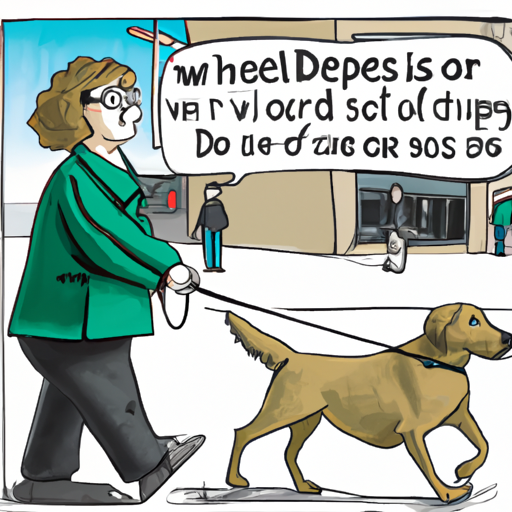Introduction
You might have noticed service dogs accompanying people in public places and wondered, “Why do people have service dogs?” As a caregiver, it’s essential to understand the various roles these special companions play in assisting individuals with disabilities.
Understanding the Role of Service Dogs
Service dogs are no ordinary pets. They undergo rigorous training to perform specific tasks for individuals with disabilities. Here’s how they help:
- Visual Impairment: Guide dogs help individuals who are blind or visually impaired navigate their surroundings.
- Hearing Impairment: Hearing dogs alert their handlers to essential sounds like doorbells, alarms, and other crucial auditory signals.
- Mobility Issues: Service dogs can open doors, pick up objects, and even help their handlers get dressed.
- Mental Health Disorders: Psychiatric service dogs can detect changes in their handler’s mental state and provide comfort during panic attacks or episodes of depression.
- Medical Emergencies: Some service dogs are trained to detect seizures, low blood sugar, and other medical emergencies before they occur.
The Benefits of Having a Service Dog
You’d be amazed at the profound impact a service dog can have on an individual’s life. Here are some benefits:
- Increased Independence: Service dogs allow individuals with disabilities to perform tasks without the need for human assistance.
- Improved Confidence: The presence of a service dog can boost self-esteem and promote a sense of normalcy.
- Enhanced Social Interaction: A service dog can act as a social bridge, encouraging interactions and conversations with others.
The Process of Getting a Service Dog
It’s not as simple as picking a dog from a shelter and labeling it a service dog. The process involves several steps:
- Application: The individual applies to a certified service dog organization detailing their needs.
- Matching: The organization matches the individual with a dog that fits their personality and disability requirements.
- Training: The service dog undergoes specific training to perform tasks related to the individual’s disability.
- Transition: The dog is introduced to the individual and they start living and working together.
Frequently Asked Questions (FAQ)
-
Can any dog be a service dog?
No, not every dog has the temperament or capability to be a service dog. It requires certain breeds and intensive training. -
Can service dogs go anywhere?
Yes, under the Americans with Disabilities Act (ADA), service dogs are allowed in all public places where their handlers go. -
Do you need a doctor’s note for a service dog?
Typically, yes. Most organizations require proof of disability when applying for a service dog. -
How long does it take to train a service dog?
It can take between 1 to 2 years, depending on the tasks the dog needs to learn.
Understanding the role and importance of service dogs can help us appreciate these exceptional animals and their handlers. As a caregiver, you’ll find this knowledge beneficial when interacting with individuals who rely on service dogs for their day-to-day activities.



